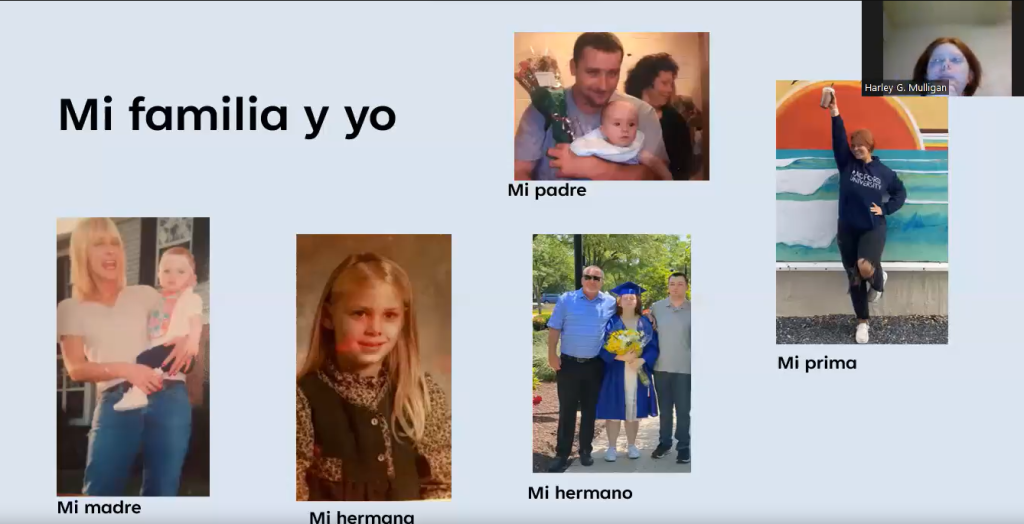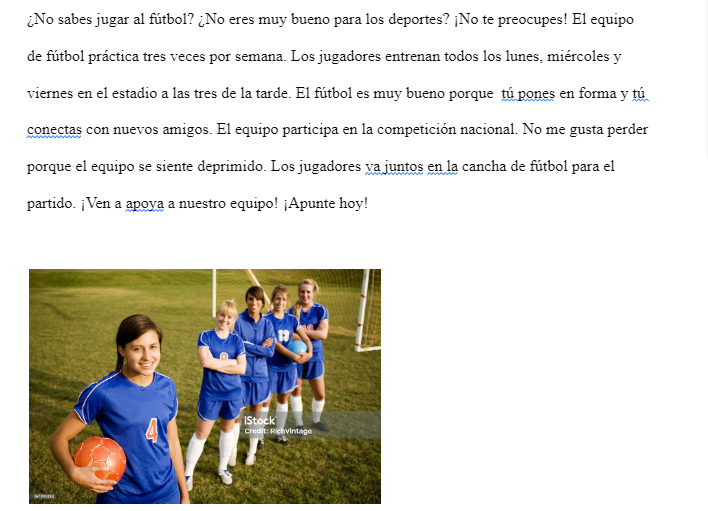Interpretive, Interpersonal, and Presentational Modes of Communicatio
Exploring Culture
Over the course of this semester I read about Spanish culture, tradition, and practices using the online textbook on Lingro learning cultural section. It showed me how different our practices are in America versus other Spanish speaking countries. Such as their medicine and how they take care of their wellbeing. In South America there is a herbal tea called Yerba mate which is used to boost energy, memory, get rid of headaches, and many other physical symptoms. In America we do not practice any natural medicine, usually every illness is solved with a pill, shot, or a doctor visit. Many Spanish speaking countries have legalized same-sex marriages while some like Paraguay, Peru, and Venezuela have outlawed it. In America same-sex marriage has been legal across all 50 states since 2015.
Learning about the different healing methods from Spanish culture has helped me been more open to the idea of using natural medicine as a way to treat illness. Growing up in America which is a very scientific heavy society has taught me that sickness can only be helped with medicine from the doctor or pharmacy. Hearing and reading testimonies from those who have used the herbal tea before made me realize there is more than one way to heal the body. However when I heard that some countries in South America still outlawed same-sex marriage I was a little shocked because of a majority of them had already legalized. I understand many of these places have bigger problems to deal with like poverty and a declining economy in some of their countries so I can see why it might not be at the top of their list to fix. Some of these countries also have a high Catholic or Christian population which usually heavily oppose same-sex relationships.
Engaging in Communities
The importance of community is not talked about much in America due to how individualistic the society is. Having a strong bond can be helpful if their is a big loss or disaster within the community it can cause them to become closer as they heal. Connecting to your community does not have to be local because there are several ways a person can make an impact like volunteering, donating to food banks or shelters, community service, and many other ways.
During the semester I would try to help my classmates out whenever they had any questions about the assignments or the grammar whenever they were struggling. This helps me build a stronger community by reaching out to them whenever I need help as well and helps both of us learn the material better if we hear it from our peers instead of only from the instructor. Having large groups of friends or sharing similar interests with my classmates can help us repair the community by working together instead of only doing it by yourself.
Interpersonal Communication
TalkAbroad is a service that allows you to speak to a native speaker in a language to have a conversation live. For two of our units we had to have a conversation using only Spanish with someone overseas and interview each other using specific questions regarded to the units we were learning about at the time.
I enjoyed the interpersonal communication the most this semester because I am better at speaking Spanish than I am at writing it. However I was nervous before my TalkAbroad interview and how I was going to reach the 15 minute time limit I needed in order to complete the assignment. I met with Marian who was the woman on my second TalkAbroad who was extremely patient and kind. I felt more confidant after finishing the interview because after I got over my nervousness the time flew by and the interview finished after 18 minutes. I would forget to ask certain questions related to the unit but Marian never rushed me and let me go at my own pace until I got back on track. I think I excelled at asking the questions related to cooking or discussing our favorite foods because I love to cook and many of the vocabulary I already knew from previous semesters.

Presentational Speaking
I did one presentation in the beginning of the semester about describing my family in Spanish. The project required me to include pictures to show what I was discussing and had to be at least 3 minutes long.
The most challenging part of this presentation was having to redo it over and over again because I kept messing up the pronunciation of some descriptive adjectives. I kept practicing reading my script so I wouldn’t mess up but I accidently kept mixing up the different family members descriptions or I would skip ahead on accident. I rerecorded the presentation until I got it right and constantly practiced my pronunciation of the vocabulary so that I would come across as clear as possible in my video. I exceled at creating sentences that connected the family members with each other like how my cousin looks very similar to me or how my parents were divorced. If I could do anything differently about this project I would try to use more adjectives in my sentences instead of mainly relying on the physical characteristics.

Presentational Writing
For my 7th and 9th units we had to make convincing flyers written in Spanish about how to stay healthy. In Unit 7 I made a flyer for a college women’s soccer team and the benefits that come with practicing sports and exercising. During unit 9 I created a infographic about the flu including its symptoms, causes, and how to prevent catching it.
For my sports flyer project the hardest part was trying to use catchphrases to get the reader’s attention. Usually we just learn the grammar and vocab to try to create sentences on our own. Using the catchphrases helped me conjugate the unit’s verbs easier. While making my infographic I struggled the most with the formal command. I was confused on how to conjugate them in the third person formal. I spent many hours studying them before completing the project in class and by the time I had to make any corrections to my work I understood how to use formal/informal commands. The easiest part of both projects for me was writing down the benefits of exercising and the causes of the flu because we went over both of those in class several times. Next time I think I could have been more detailed about the descriptions of what soccer players usually do and how to prevent the flu.

Interpretive Listening
During the whole semester I participated in an abundance of group work in class that would involve us creating sentences or answering questions and responding to them in Spanish. Outside of class I also listened to my classmates projects for unit 6 and left comments on their videos about how their families were similar or different than mine. As well as listening to several videos of native speakers in class or in my online textbook Lingro Learning.
I Listened to my fellow classmates describe their families and themselves in our first unit and videos from native Spanish speakers. The most difficult part listening to some of the videos was how fast they spoke. I had to watch the video and rewind it multiple times to understand the full message of what was being said. I found it most interesting how some of my classmates went about including the pictures of their families. Some had printed pictures, used their phone, or made a presentation like I did. I enjoyed how much freedom we had with this project and learning about my classmates’ family members. My biggest takeaway from this would be if you do not understand someone the first time do not be afraid to ask questions to clarify and to use the context clues from what you do understand to figure out what is being said. I feel like I have grown significantly because in Spanish 101 I really struggled with understand what was being said without seeing it written down at the same time. I used to find it much easier if I could read along with what the speaker is saying while listening to them but now I have no problem with responding to them back after just hearing it once.

Interpretive Reading
In my Spanish 101 class I could barely write whole paragraphs with little grammatic errors. Now it is easier for me to write in Spanish because of the amount of extra reading I have done for both 101 and 102. During this semester we talked about how some Latin America countries have not legalized same-sex marriage and were told to find articles on the subject in order to learn about their culture. I found an article titled Same-Sex Marriage Around the World. (Same-Sex Marriage Around the World, 2023 June 9, Pew Research Center, Retrieved from https://www.pewresearch.org/religion/fact-sheet/gay-marriage-around-the-world/)
The most challenging part of the reading was trying to connect the article to what was being discussed in class because the unit at the time we were learning about the time was about sports and exercising. I kept trying to wrap my head around how far some of the other Latin American countries have come like Cuba or Ecuador but some of their neighboring ones have yet to legalize it. What I found most interesting about reading about marriage equality is most of them made same-sex marriage legal very recently in the past couple years. While many places in Europe or America were almost or over a decade ago.